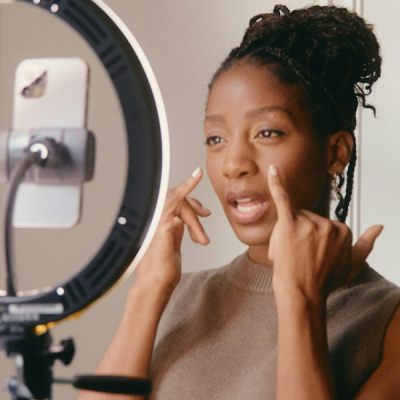Watch your timeline!
Deconstructing holy grail of virality
Roger Darashah
‘And don’t forget to include viral videos . . . at least one per month’. I’m sure I’m not alone in shuddering when I receive such a brief. The PR equivalent of drafting an Oscar acceptance speech, before commissioning the film.
Such exigencies are unlikely to disappear; a combination of polite counsel and common sense is my preferred approach to addressing the same – if Hilary Clinton or EU Remainers had ‘known’ how to make their message viral, wouldn’t they have simply done that, won their respective elections and moved on. History has proved that it’s slightly more complicated . . . .
However, what such requests reveal is the intense pressure brands are under to remain relevant, to be present in other people’s timelines, and to be visible. When the context is focused social media, the environment becomes more complex and far more volatile; it’s difficult to ‘leverage relationships’ directly with thousands of ‘mini editors-in-chief’, and we can hardly escalate to an editor or publisher in the event of a mis-representation. The degree to which content is ‘paid’ or ‘endorsed’ for a fee is not always evident, and even if a particular conversation was initiated through such means, it may be fully organic by the time virality is reached.
Luis Fonsi’s song Despacito went through Universal Music’s usual promotional channels before transforming into a Youtube phenomenon, generating over 4 billion views . . . . . and counting. Much of the popularity was organic – Despacito even become a terrace anthem for fans of the Argentinean team, San Lorenzo (Luis Fonsi is actually Puerto Rican which is over 6,000km away) – but trying to extract the respective contributions of paid verses genuine organic is an impossible task.
So, to paraphrase the opening, fictitious, client request, what are the ingredients that make up a viral, what are the best formats, how much paid is required? While I can’t answer this any more than I could guarantee a hit single or an Emmy – even for my favourite client – its reasonable for PR practitioners to have a point of view on the same, and to be able to advise their clients accordingly. So, here’s mine . . .
If you wanted to meet and influence people, the first thing you’d probably do is find out about them, their interests, their personalities, their hobbies, where they went on holiday, what music they like…. Then you would find something that you have in common; a shared interest, a mutual friend, a shared experience. It’s as old as humanity – humans work best with other humans to whom they relate.
To do otherwise would be to succumb to what I call the ‘noisy neighbour’ syndrome; we’ve all experienced the egocentric neighbour whose conversation never ventures beyond the success of his progeny, his golf handicap, his amazing pension plan, or the killing he made on the stock market. You know the type…. other people’s conversation is simply a trigger for him to talk about him or herself. Bizarrely, some brands behave in exactly the same way! Social media is simply the aggregation of human behaviour; so, firstly, listening and making yourself relevant to your audiences’ conversations should be the (only) starting point.
The second great unwritten law of social virality is the idea of gratification – and I don’t mean the brand’s. I mean the audience’s . . . Why should they share your content? What is their incentive to participate in your campaign? Motivations can range from prestige (especially with content that is somehow ‘exclusive’ or ‘private’) to monetary (offering discounts to people who participate in your campaign), but the key is to provide some form of acknowledgement to your audience; it is they, who are going to propagate your message after all. My ‘earned/editorial’ instincts tend to favour the ‘prestige’ approach to gratification; if you can create genuine value for your audience (premier access to a product or service), exclusive interaction with a celebrity, or some form of public recognition (the ‘super fan’ logic), there is an opportunity to develop valuable relationships that last.
Thirdly, personalization has become the ‘social currency’ of the age. People – particularly younger audiences – are systematically more likely to share content that they can make their own, to which they can add their spin . . . . . their identity. The beauty of Donald Trump’s accidental ‘covfefe’ Tweet published last May, was the ease with which people could personalize it, and contribute their take – and gratification – to the whole episode. More recently, US fast food chain KFC was fastest to react to The US President’s nuclear button claims aimed at his North Korean counterpart; directing their irony towards competitor McDonalds, KFC tweeted: “McDonald’s leader Ronald just stated he has a “burger on his desk at all times”. Will someone from his big shoed, red nosed regime inform him that I too have a burger on my desk, but mine is a box meal which is bigger and more powerful than his, and mine has gravy!””. These examples demonstrate the effect that personalization can have on content’s potential to be propagated.
And the brand in all of this . . .? The paradox is that virality is rarely dependent on the brand, it is actually all about the audience. This is one of the characteristics of the ‘post protagonist’ age in which brands are operating. So the best response to the client ‘viral video’ request is to start studying your target audience as quickly as possible.
http://blog.adfactorspr.com/perspectives/what-brexit-and-brexit-x-3-reveals-about-how-to-get-a-message-across/
http://blog.adfactorspr.com/perspectives/meet-the-new-editor-in-chief-you/
https://www.youtube.com/watch?v=kJQP7kiw5Fk
https://www.theguardian.com/football/copa90/2017/jul/15/despacito-luis-fonsi-song-took-justin-bieber-football-anthem
https://www.indy100.com/article/donald-trump-tweet-covfefe-meme-reaction-funny-white-house-7764446
http://www.mirror.co.uk/news/world-news/kfc-threatens-mcdonalds-trolling-donald-11794521
http://blog.adfactorspr.com/perspectives/brands-wake-up-to-the-post-protagonist-age/













